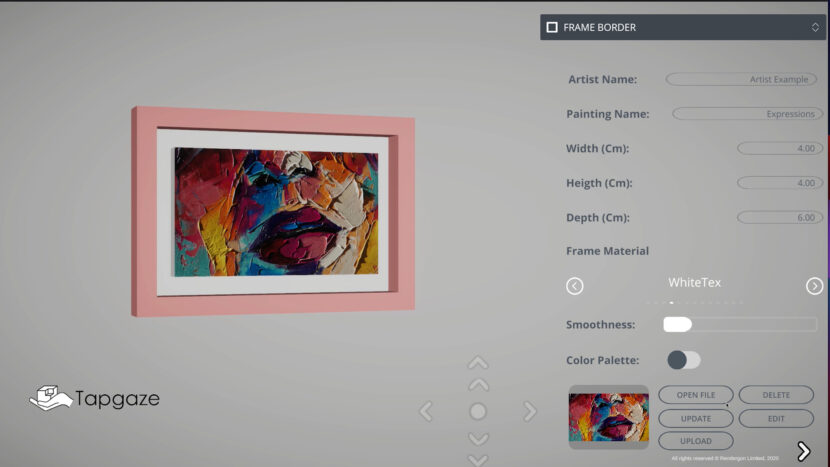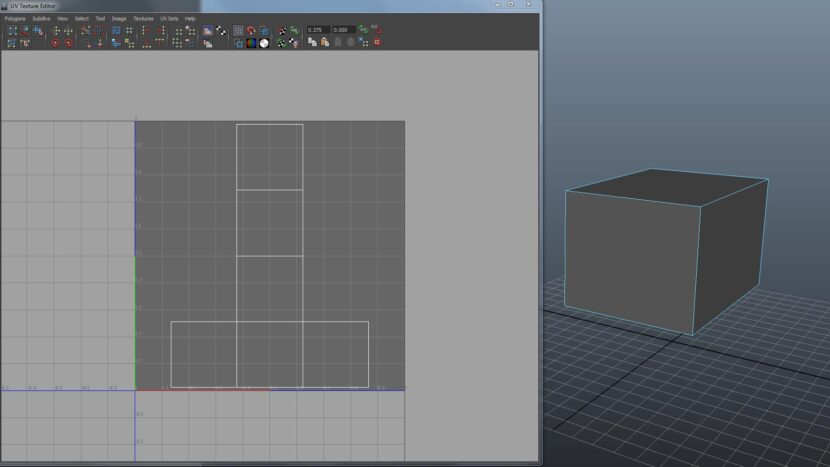Tapgaze 3D Model Frame Design
An Augmented Reality canvas art experience benefits from frames being in 3D. This is because users can walk around 3D objects and this creates presence of artwork where the user stands.
During the creation process at Tapgaze, artists and galleries can design canvas art frames in 3D.
After an artist or exhibitor uploads the image of the artwork in Tapgaze Creator (available on the Apple App store), it is time to design the frame. Presenting this artwork is part of the entire creation process. After all, how a photograph or work of art is presented adds to the overall effect of the entire piece.
Tapgaze Creator is an easy to use tool to create your frames in 3D. A 3D real size frame can be created in under 2 minutes. In addition, Tapgaze Creator is built with productivity in mind, after all catalogues can gather extensive artwork collections. Thus any 3D frame can be easily inherit a 3D frame at the click of a button.
3D Model Creation Approach Choices
Unlike traditional 3D experiences where 3D models are created and uploaded to the app at its creation, Tapgaze creates the 3D frame models at runtime or on-the-fly when the user wants to gaze at it.
The London based studio that has developed Tapgaze, Rendergon, chose creating the 3D models at runtime instead of storing these models in the cloud and downloading them when the AR app synchronizes because the size of the canvas art image is ~2MB.
In general, any webpage image is 150Kb, that is 15% of 1 MB. However, a user in an augmented reality experience may stand up to 10 cm in front of the artwork image in real size. Real size artwork can be larger than any 2D computer screen, certainly larger than a mobile screen, and it is often over half a meter. Therefore a higher image resolution guarantees a more satisfying AR experience. This is particularly important for an art AR experience. For this purpose, images at Tapgaze are capped at 2 MB instead of 150Kb.
Large images increase the amount of data that needs to be downloaded when the AR application synchronizes with the cloud database. To balance this higher amount of data transfer and after several optimization tests, Rendergon chose to create 3D models at runtime instead of transferring the models themselves.
Runtime 3D Model Creation Engine
Artists and exhibitors create 3D model frames as they input real size measures, frame material attributes and design their frame in 3D. Tapgaze is developed on Unity3D engine, which provides powerful APIs and an efficient 3D model vertex manipulation approach to create 3D models at runtime.
Furthermore, Unity3D provides an efficient platform to unwrap the 3D mesh at runtime, step required to apply seamless texture maps, i.e. on where a user viewing a 3D model does not see where the “skin” of the 3D model was cut to be unwrapped. This is because unwrapping is a required step to apply textures to 3D model materials. Below a snapshot of the “skin” an unwrapped UV map of a 3D cube mesh in Maya.
What’s Next
The arrival of 5G will open the opportunity to send from our cloud servers a full blown array of high resolution texture maps and large size and more complex poligon 3D meshes. Maybe then storing 3D models makes more sense. We continue to watch this space!
We are working on more features, you can subscribe to our newsletter here.
BETA RELEASE
We just released the Beta version for everyone to join free.
Start creating your painting artwork for AR today ! (iOS/MacOS only)


